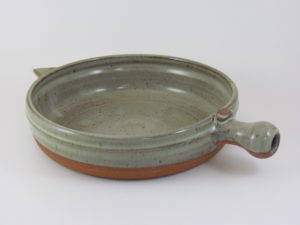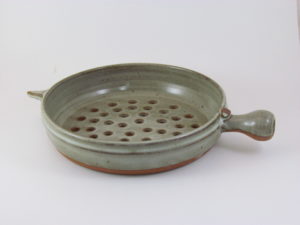It’s not everyday you think about what goes into your cookware. No, I don’t mean what food goes into it that you’re cooking, I mean the materials used to actually produce the pot or skillet you are using.
The most common type of cookware people use today is metal. What people don’t normally think about is the types of metal used in the cookware itself. Cast iron, stainless steel, and aluminum are very common materials, but there is one that may cause irritation if you are not careful. This element is nickel.
Why can nickel be irritating? It is for those who have a nickel allergy. A nickel allergy develops when the body believes that a substance or bacteria, in this case nickel, is harmful to the body so the immune system starts to protect your body from it by ‘attacking’ it. Once you have had a reaction to nickel, you will always be sensitive to it. Using metal cookware that contains nickel can cause a reaction on your hands when you are touching or washing it, and can also cause stomach irritation because the food made in these items can obtain nickel from the cookware. Reactions include skin rashes that can be red, itching, painful, and blistering, depending on how severe the person reacts. Nickel is also found in jewelry, tools, keys, and many other common products.
So if you have a nickel allergy, an alternative to metal cookware is clay cookware. Clay cookware has a numerous amount of benefits that not only benefit people with nickel allergies, but everyone. Clay cookware is made out of 100% pure and all natural materials, therefore there is no toxic metals or chemicals involved. Because of the materials used, it appeals to people who are vegans, all organic, and on certain diets or have dietary restrictions. What’s also a great feature is that all clay cookware is eco-friendly.
A very important factor to know about clay cookware is that because of the materials used, the cookware retains heat much better than normal metal cookware. Therefore, when you are cooking you want to adjust the timing because once you take a meal out of the oven or off the grill, it will still cook for a bit while it’s in the dish. So if you believe a dish is close to being done, take it out because it will still cook inside the pan.
If you are using a piece with a lid on it, such as a tajine (shown below), it circulates the steam inside the pot, and because clay cookware is porous, it absorbs excess water and allows the dish to cook in its natural juices, causing a much better overall flavor. It locks in the nutrients so you aren’t losing any flavor or nutritive value, which makes your meals not only taste better but make them better for you.
Where can you find clay cookware? Right here at Clay Coyote in Hutchinson, Minnesota. We are your one stop shop on all things clay. We not only showcases our own work, but many other artists from around the United States as well. We have fascinating pieces inspired from cultures all over the world. It’s a great way to try your hand at ethnic cooking, but our pieces can be used for any type of cuisine.


You can find us at www.claycoyote.com where you can view our gallery, read our blog and find recipes, and buy our products. You can also follow us on Facebook, Instagram, Twitter, and Pinterest! The best way to be awed by our work is to come into the studio for yourself located at 17614 240th Street, Hutchinson, MN 55350. Located one hour southwest of the Twin Cities, it’s a beautiful spot on the countryside to shop for all your clay needs. Our hours are Monday – Saturday 10am-5pm and Sunday 12pm-4pm. Any questions or comments can be directed to (320)-587-2599 or [email protected].
While you can find flameware at Clay Coyote, you can also find it from these flameware producers as well. Robbie Lobell in Coupeville, WA has over 30 years of experience making clay cookware at her studio Cook on Clay. She has been featured in many magazines and publications, and is involved in five different art organizations. She also teaches classes in her workshop and all around the world. Terry Silverman in Fitzwilliam, NH has a full gallery of flameware which has been his specialty since 1977 at his studio The Pottery Works. In the 60’s he developed an unusual 50-step process to making a healthier alternative to metal cookware. He uses one simple, neutral colored glaze for all his pieces. Bill Sax in South Hadley, MA creates beautiful, functional flameware that is inspired by artist Karen Karnes. Because he was impressed by flameware’s ability to be strong and multi-functional, he decided to start creating it himself, which he has done since 1954.
There are reams of benefits of using clay cookware regardless of if you have a nickel allergy or not. Strongly consider switching from metal to clay cookware in your daily kitchen use. You won’t only see results, but taste them too.
